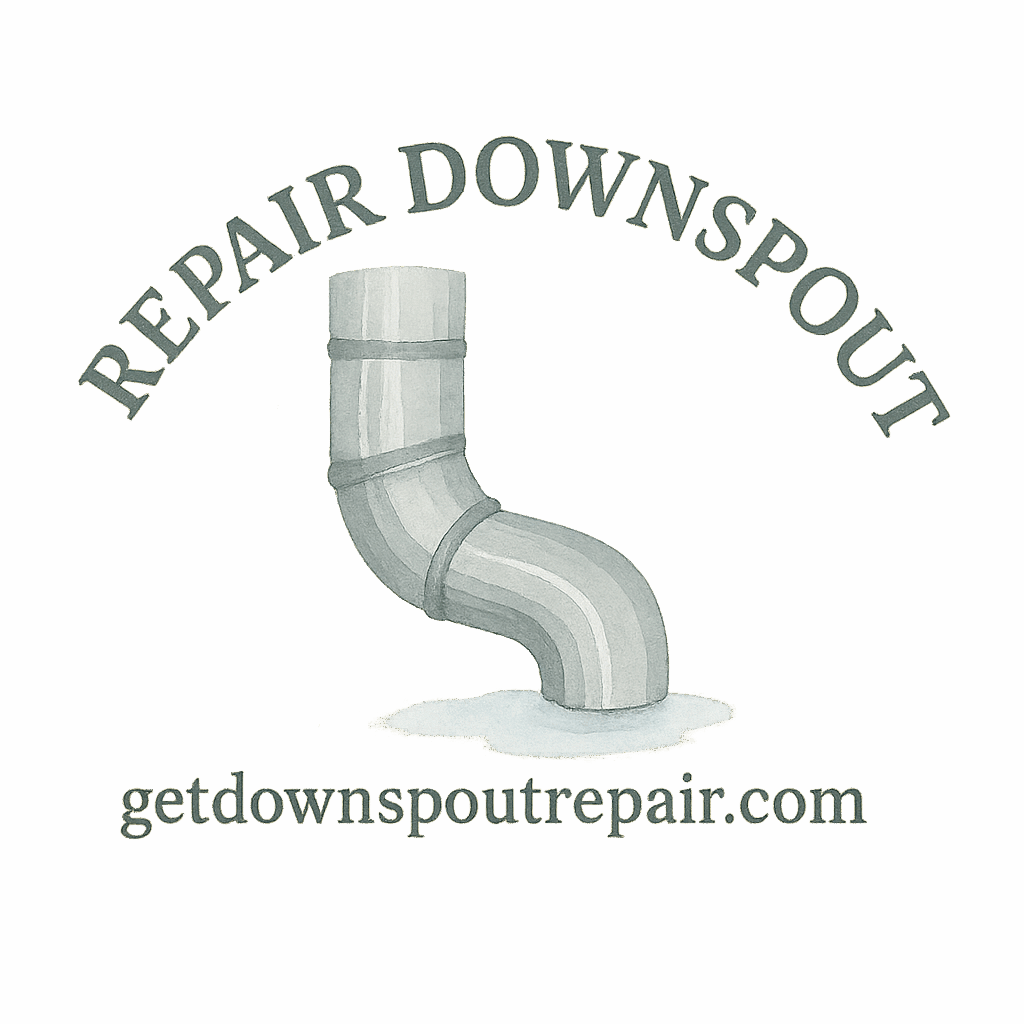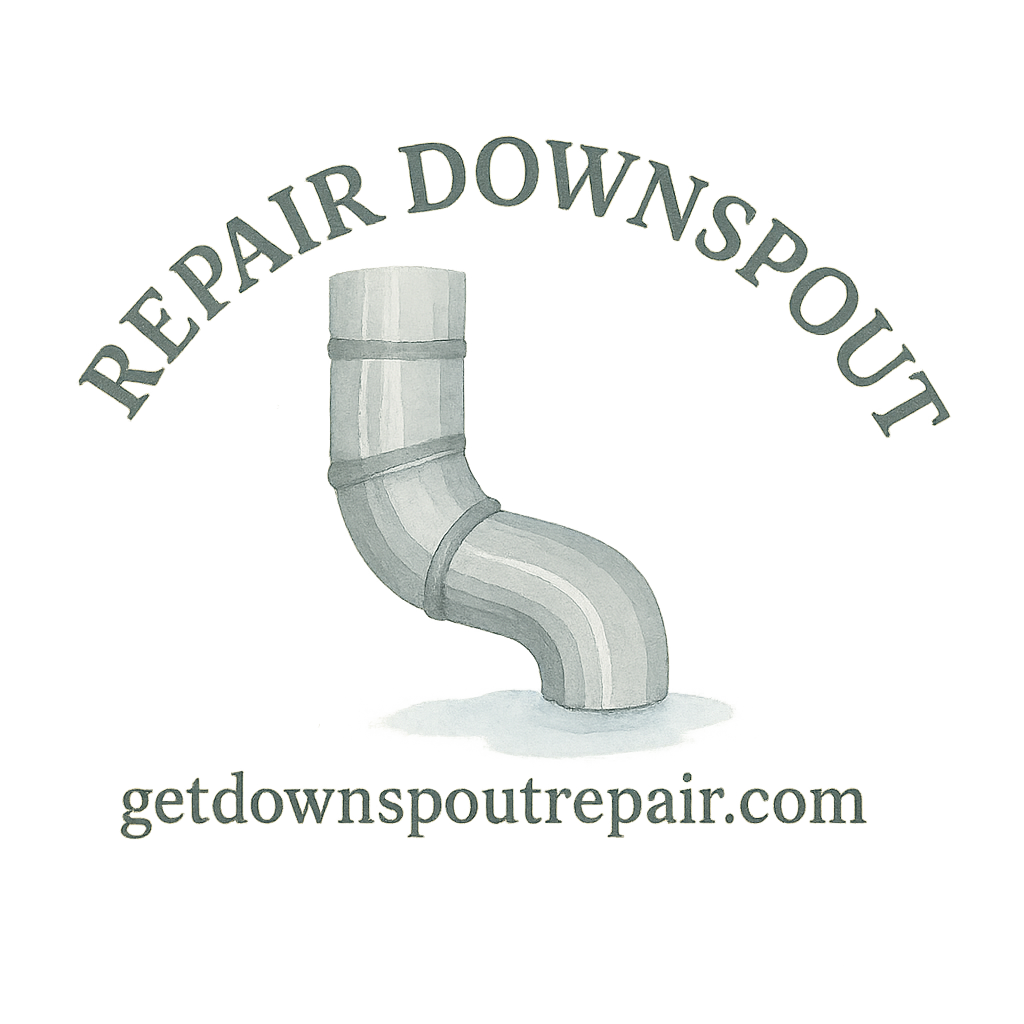Why Downspout Repair Matters in Winter
When winter rolls around, your downspouts become the unsung heroes of your home. Snow, ice, and freezing rain put incredible pressure on your gutter and drainage system. Without proper care, your downspouts can crack, clog, or even collapse. Think of them as the arteries of your house—if they’re blocked, everything else suffers.
Taking the time to perform DIY downspout repair routines not only saves you from expensive water damage but also ensures your home stays safe and dry.
Snow, Ice, and Downspout Strain
Snow and ice might look pretty, but they’re not gentle on your gutters. When heavy snow sits on your roof and starts melting, water rushes down into your gutters. If your downspouts are blocked or cracked, that water has nowhere to go. This can lead to ice dams, leaks, and even damage to your home’s foundation.
Ignoring Downspouts Can Lead to Costly Damage
Skipping downspout maintenance is like ignoring the check engine light on your car—it’ll cost you later. Water backup can cause mold, cracked foundations, and ruined landscaping. Repairing water damage is often five to ten times more expensive than keeping your downspouts in shape with DIY routines.
For a full beginner’s guide, check out repair basics and start with small preventive steps before problems snowball.
Tools and Materials You’ll Need
Before diving into the repair routines, let’s make sure you have the right tools.
Basic Downspout Repair Tools
- Screwdriver or drill
- Caulking gun with waterproof sealant
- Utility knife
- Gutter scoop
- Garden hose
For a full checklist, see DIY tools.
Safety Gear for Cold-Weather Repairs
Working in the snow isn’t just chilly—it’s risky. Equip yourself with:
- Sturdy gloves
- Non-slip boots
- Safety goggles
- Ladder stabilizers
Never climb up without proper footing; icy roofs are dangerous.
Budget vs Premium Repair Materials
Sometimes you’ll be tempted to buy the cheapest sealant or patch kits. But winter requires quality products built to withstand freezing temps. Visit costs & materials to learn where spending a little extra can save you from repeat fixes.
Routine #1: Inspect for Ice Dams
Ice dams are the enemy of downspouts. Inspect your gutters after every snowfall. If you see large chunks of ice forming at the edge of your roof, it’s time to act. Break small ice buildups with a mallet (never sharp tools!) and clear pathways for melting water.
Routine #2: Clear Snow Around Downspouts
Shoveling the driveway is obvious, but don’t forget the base of your downspouts. Piled-up snow traps water and creates ice blockages. Keeping this area clear prevents backups that could force water back into your home.
Routine #3: Seal Cracks and Small Leaks
Even the tiniest crack can turn into a nightmare when water freezes and expands. Seal all visible leaks with waterproof caulk or patch tape. This simple 10-minute task can save you hundreds of dollars in spring repairs.

Routine #4: Install Gutter Extensions
Snowmelt often pools near the foundation if your downspouts are too short. Add gutter extensions to redirect water safely away. Not only does this protect your basement from flooding, but it also reduces ice patches around your home’s perimeter.
Check out drainage protection for more strategies.
Routine #5: Check for Clogged Downspouts
Clogged downspouts are a classic winter issue. Ice, leaves, and debris form nasty blockages.
Signs of a Clogged Downspout
- Overflowing gutters
- Water spilling from joints
- Strange gurgling sounds during snowmelt
Quick DIY Fix for Blockages
Use a garden hose or plumber’s snake to clear debris. If ice is the culprit, pour warm (not boiling) water down the spout to melt it gradually. For ongoing issues, read about prevent clogging.
Routine #6: Reinforce Loose Joints
Snow and wind loosen downspout brackets over time. Tighten screws and reinforce joints with sealant. A secure downspout is less likely to bend or break under the weight of snow.
Routine #7: Protect with Heat Tape
Heat tape is like a warm blanket for your downspouts. Wrap it along gutter edges and vertical pipes to prevent ice buildup. It’s a smart investment if you live in areas with harsh winters.
Routine #8: Redirect Meltwater Away from Foundation
Water pooling at your foundation during snowmelt is a recipe for cracked walls and basement leaks. Use splash blocks or flexible extensions to guide meltwater at least five feet away. Learn how to fix downspouts for better water flow.
Routine #9: Insulate Exposed Downspouts
Downspouts that aren’t shielded by siding or landscaping are prone to freezing. Wrap them with foam insulation sleeves to keep water moving. Think of it as giving your pipes a winter coat.
Routine #10: Schedule Mid-Winter Maintenance Checks
Don’t just fix problems when they appear—prevent them. Set a reminder to do a full inspection halfway through the season. This gives you the chance to catch issues before they become full-blown disasters.
Pro Tips for Snowy-Weather Downspout Repair
When to Call a Licensed Contractor
Sometimes DIY isn’t enough. If your gutters are sagging, or water damage has already started, call a licensed contractor. They’ll handle major repairs safely and efficiently.
Saving Money with DIY Repairs
DIY saves you money, but only if done right. Using the right repair tools and materials ensures your fixes last all winter. Explore more budget tips to keep your home protected without breaking the bank.
Conclusion
Winter is tough on your home, but your downspouts don’t have to suffer. By following these 10 DIY downspout repair routines for snowy winters, you’ll keep your drainage system flowing, protect your foundation, and save money on costly spring repairs. Treat your downspouts like the guardians they are—because when they work, your entire home stays safe and dry.
FAQs
1. Can I repair downspouts in freezing weather?
Yes, but use safe practices. Wear non-slip boots, work during daylight, and avoid icy roofs.
2. How often should I check my downspouts in winter?
At least once after every major snowfall or thaw cycle.
3. What’s the cheapest way to fix a leaking downspout?
Seal small cracks with waterproof caulk—it’s quick, affordable, and effective.
4. Do I really need gutter extensions in winter?
Absolutely! They prevent water from freezing near your foundation.
5. How do I know if my downspout is clogged with ice?
If water spills over your gutters or joints, chances are ice is blocking the flow.
6. Should I use rock salt to melt ice in my downspout?
No—salt corrodes metal. Use warm water or heat tape instead.
7. What’s the best long-term solution for winter downspout problems?
Combine regular DIY maintenance with professional check-ups for the perfect balance of savings and safety.


